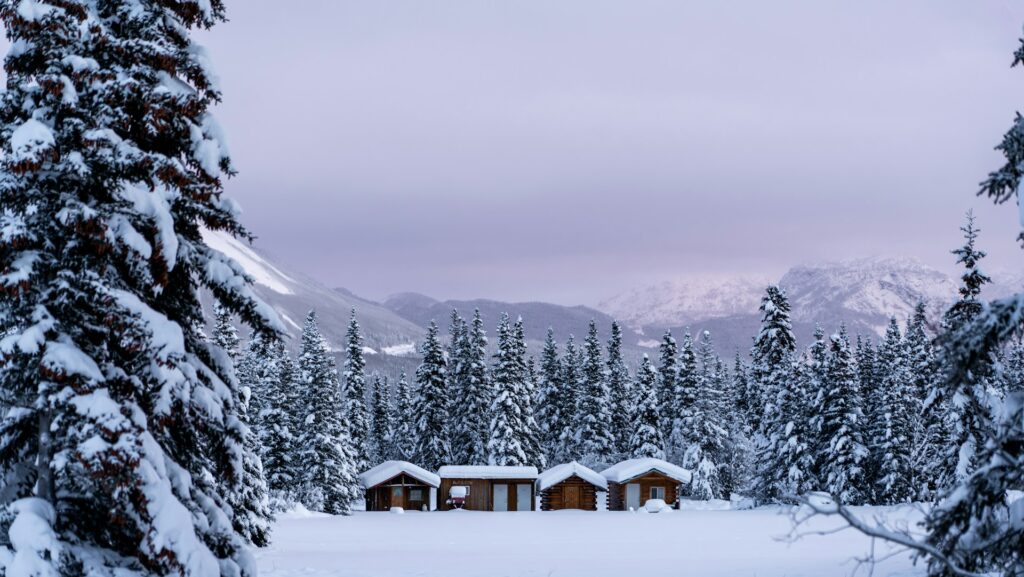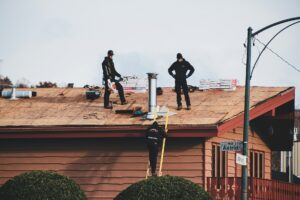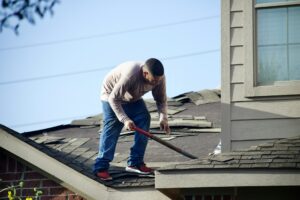Bend’s high desert climate delivers dramatic temperature swings, sunny afternoons can easily dip into freezing nights within a few short hours. The crisp fall air and changing foliage often belie the rapid onset of winter conditions. Because the first freeze in Central Oregon can arrive earlier than many homeowners expect, September stands out as a critical time for winter preparation. A few proactive steps today can save you from unnecessary repairs and ensure a more comfortable winter ahead.
When gearing up for the colder months, small details often make the biggest differences. Minor cracks in roofing materials or clogged gutters might not seem urgent now, but a single freeze-thaw cycle can turn small issues into costly problems. By proactively preparing in September, you maintain control of your schedule, minimize expenses, and prevent larger repairs later in the year.
If you want hands-on help, HOMEMASTERS provides winter preparation services tailored to Bend’s environment. Whether you need an experienced eye to inspect your roof’s integrity or a comprehensive plan for preventing ice dams, our team stands ready to support you.
Understanding Bend’s Temperature Patterns
Bend typically experiences its first significant freeze in late September or early October, though exact dates can vary from year to year. According to local NOAA climate data, nighttime lows in the 30s can appear surprisingly early. Even brief, sudden drops below 32°F can cause immediate issues in unprepared homes.
Rapid temperature swings are also common. Daytime highs regularly hover in the 50s or 60s with relatively mild conditions. After the sun goes down, though, those temperatures can plummet, creating freeze-thaw cycles overnight. When water seeps into small cracks in roofing or concrete, it expands as it freezes. Repeated expansion and contraction can widen those cracks over time, weakening materials and reducing their lifespan.
Early fall weather looks deceptively mild, but the freeze risk can strike with little warning. This underscores why homeowners need to schedule winterization strategies well before the official first freeze date. By September, it’s wise to start reflecting on last winter’s lessons: Did any snowmelt linger on your roof? Did icicles form along gutters? Any indications of draftiness in your attic? Tracking what happened last winter helps systematically address potential vulnerabilities before temperatures drop this year.
How Temperature Extremes Affect Roofing Materials
Your roof endures constant exposure to Bend’s daily temperature fluctuations. Although Oregon is famous for idyllic scenery, the high desert region can challenge standard building materials. Two forces deserve special attention:
Thermal Expansion and Contraction
Roofing materials like asphalt shingles, metal, or cedar shakes each respond differently to temperature changes. With repeated freezing at night and warming during the day, materials expand and contract on a near-daily basis in the fall and winter. Over time, this movement can cause subtle shifts that loosen nails, create small gaps, or degrade sealants.
UV Exposure Followed by Cold Stress
Bend enjoys numerous sunny days, even in cooler months. Prolonged sun exposure can stiffen or dry out roofing materials. When that same roof faces subfreezing nights, the material is forced to transition rapidly from warmth to cold. Asphalt shingles, for example, may lose some flexibility and develop fine cracks around the edges. Metal roofs, while generally durable, can exhibit stress around screws or seams.
It’s best to identify any signs of wear and tear before the first freeze. Check flashing, vents, and transitions around skylights to make sure all are sealed tight. Look for curling shingles or areas where granules have worn thin. Subtle indicators might not cause an immediate leak but can worsen through repeated freeze-thaw cycles. Prompt attention in September leads to better cold-weather performance and often extends the roof’s overall life span.
Ice Dam Prevention Strategies
Ice dams form when heat from your attic melts snow on the upper parts of the roof while lower edges remain frigid. Water running down the slope refreezes at the cold eaves, eventually collecting into a ridge of ice. When more meltwater arrives behind this ridge, it has nowhere to go, often seeping under shingles and into your home.
In Central Oregon, ice dams develop in part due to the region’s fluctuating temperatures. Sunny days melt surface snow, but crisp nights cause abrupt re-freezing. Sulfate and de-icing salts are less common here, leaving most of the burden on good roof design.
The best prevention plan includes:
Adequate Attic Insulation
Preventing ice dams begins with making sure excessive heat isn’t escaping to the attic, which warms the roof prematurely. Well-placed and sufficient insulation helps keep interior warmth in your living space, rather than heating the underside of your roof. • Air
Sealing
Even the best insulation underperforms if gaps or cracks let warm indoor air escape directly into the attic. Sealing around vents, wiring penetrations, and hatch openings ensures the attic stays closer to the outside temperature, reducing snow melt at the roof’s surface.
Proper Ventilation
Steady airflow through the attic removes moist air, keeps roof surfaces more uniformly cool, and averts uneven melting. By combining insulation and ventilation, you minimize the chance of ice dam formation.
For added protection, some homeowners in Bend install heated cables along eaves or professional ice dam barrier systems. These solutions can help, especially on roofs with certain architectural designs or specific problem areas. If you’ve battled reoccurring ice dams, talk with a professional like HOMEMASTERS to evaluate your roof’s architecture and discover the right combination of insulation, ventilation, and specialized products that can mitigate future ice dams.
Attic Ventilation for High Desert Climates
Ventilation in Bend’s high desert climate strikes a delicate balance, too little airflow leads to trapped moisture, but too much can drive up heating bills. During the day, the attic may warm quickly under bright sun, and at night, temperatures can drastically drop. Moisture from daily home activities (cooking, showering, laundry) can also evaporate upwards, lingering if not vented properly.
A well-ventilated attic will:
1. Regulate Temperature
Balanced airflow keeps attic temperatures stable, reducing the risk of ice dams and protecting shingles from overheating. This equilibrium is particularly important in a place like Bend, where temperature swings can be more pronounced than in regions with milder climates.
2. Keep Insulation Dry
Moist insulation is less effective. Ensuring good airflow carries away moisture before it condenses on your insulation or rafters.
3. Extend Roof Lifespan
Well-managed ventilation counters the stress of thermal expansion and contraction. Roof materials are less prone to warping or cracking when attic conditions remain relatively consistent.
If you’re unsure whether your attic’s ventilation is adequate, consulting professionals or using basic guidelines for ventilation-to-square-foot ratios provides a clear starting point. Requirements can vary according to your home’s unique design and roofing material. The right combination of ridge vents, soffit vents, and gable vents can dramatically improve your home’s energy efficiency and reduce roof stress over time.
Gutter System Preparation
When the first freeze arrives, any water trapped in your gutters can become a solid block of ice, heavy and potentially damaging. Blocked gutters extend the freeze further up onto the roof surface, increasing the likelihood of ice dam formation. Early gutter cleaning is an easy way to avert these problems. By ensuring gutters and downspouts are free of leaves or other debris, you give melting snow and rainwater a clear, unobstructed path away from your roofline.
In Bend, homeowners may also choose to install gutter guards, which prevent debris buildup, or consider gutter heating cables to keep meltwater from refreezing. While these systems often do the trick, they work best when fully integrated with proper roof design and attic ventilation. Standalone solutions without a properly maintained gutter system can inadvertently create more problems, especially if the system diverts water improperly.
To maintain optimal water flow:
Inspect and Clean
Remove all visible debris in early fall, then double-check for sagging or inverted sections. Make sure brackets and hangers still hold gutters securely against the home.
Check Downspouts
Sometimes, clogs form lower in the system. Aim a hose into each downspout to confirm water flows freely. • Evaluate Add-Ons
If you have gutter guards or heating cables, confirm they’re functioning. Faulty wiring or misaligned guards won’t provide the coverage you need in winter.
Well-maintained gutters channel water away from your home’s foundation and prevent ice buildup along the roof’s edge. This precautionary measure alone can spare you a great deal of winter trouble.
September The Critical Repair Window
September in Bend arrives with warm afternoons, crisp evenings, and a sense that winter isn’t too far away. This transitional month is the best time to address home exterior repairs. Scheduling professional services in September can be easier than waiting until the last minute. Contractors have more availability, and weather conditions are usually mild enough to make repairs straightforward.
Handling issues now can save you money later. Small leaks or missing shingles that remain untreated may cause rotting, mold, and interior damage once rain and snow begin. Proactive repairs also minimize emergency calls. A mid-winter roofing emergency typically comes with surcharges for urgent service, not to mention the challenge of working in icy conditions.
Beyond roofing, consider evaluating your attic insulation and weatherstripping any drafty windows or doors. These preventive steps keep the interior more comfortable and reduce overall heating costs. Identifying vulnerabilities early sets you up for reduced winter utility bills, a boon in regions like Central Oregon, where energy usage tends to spike as nights grow colder.
Common Winter Damage in Bend Homes
Winter damage can come from multiple angles. Freeze-thaw cycles affect more than roofs, foundations, driveways, and external wood surfaces all face stress when temperatures fluctuate:
Cracked Concrete
Moisture in driveway or walkway cracks will expand when frozen, leading to more significant breaks or uneven surfaces. Checking and sealing cracks helps delay costly replacements.
Warped Decking
Moisture penetrating deck boards and railings will expand in the freeze-thaw cycle. If your deck or any wooden exterior areas show signs of water repellent failure, applying a protective finish in September is key.
Frozen Pipes
While not typically visible from the home’s exterior, pipes that run along outside walls or in uninsulated garages can freeze in Bend’s subfreezing temperatures. Installing pipe insulation and sealing cracks in walls can prevent unexpected bursts.
Attending to these details keeps your home healthy during the demanding winter months. Quick repairs and improvements, particularly done early, significantly reduce the chance of an expensive surprise once heavy snows settle in.
Material Selection for Bend’s Climate
Not all roofing or exterior materials are created equal, especially in a place like Bend that experiences intense sun, cool nights, and frequent freeze-thaw cycles. When selecting materials or considering upgrades:
- Asphalt Shingles
Often more affordable, asphalt shingles fare reasonably well in different climates. However, it pays to choose higher-grade shingles designed for weather extremes. Look for those with a reinforced fiberglass base or extra protective granules to resist UV-related damage. - Metal Roofing
Metal reflects sunlight well, reducing unwanted attic heat and coping with temperature changes effectively. Still, look for high-quality metal that resists corrosion. Proper installation is vital to preventing issues around seams and fasteners. - Cedar Shakes
Popular for their rustic appearance, cedar shakes can handle temperature swings if maintained properly. Sealing with water-resistant finishes prolongs their life, but cedar may need more frequent upkeep compared to asphalt or metal. - Composite Materials
Some modern composites mimic wood’s aesthetic appeal while offering superior water resistance and durability. If budgeting allows, these materials can reduce long-term maintenance and energy costs.
If you plan a major material upgrade, pairing it with adequate attic insulation and robust ventilation ensures your chosen roofing delivers maximum performance. You also gain the freedom to explore warranties that keep you protected during extreme weather events. Be sure to discuss warranty details when comparing material brands, as each product’s coverage can vary significantly.
DIY vs Professional Winterization
Many basic steps around home winterization suit a do-it-yourself approach. Tasks like cleaning gutters, sealing small cracks in concrete, or applying weatherstripping to windows can be accomplished with minimal tools and moderate DIY experience. If you enjoy hands-on projects, you may tackle some or all of these mild tasks during a single weekend in September.
However, there are moments when calling a professional is beneficial:
Roof Inspections at Height
Walking on your roof without proper training or safety equipment poses risks. A misstep can lead to accidents and unexpected damage to roofing materials.
In-Depth Ventilation and Insulation Work
Optimizing attic airflow and insulating properly requires specialized knowledge. Overlooking air leaks or installing insulation incorrectly may inadvertently cause moisture buildup or hamper ventilation.
Electrical Projects
If you need heated gutter cables or new attic fans, let certified professionals handle electrical connections to avoid wiring hazards.
Structural Repairs
Major repairs or structural modifications demand experienced craftsmanship. A thorough repair helps ensure the problem won’t recur when winter arrives.
When you contact professionals like HOMEMASTERS, you gain peace of mind knowing that each detail is addressed precisely. Our specialists spot subtle warning signs that might go unnoticed and offer solutions tailored to Bend’s climatic nuances.
Conclusion
This season’s first freeze in Bend may arrive sooner than you think. By acting promptly in September, you set the stage for a winter with fewer headaches and potential cost savings. From ensuring your roof is sealed against relentless freeze-thaw cycles to verifying gutter flow for preventing ice dams, a comprehensive plan delivers peace of mind once that initial cold snap finally hits.
Central Oregon’s high desert environment amplifies how quickly small exterior issues can grow. Daily temperature swings test roofing materials, gutters must efficiently manage snowmelt, and attic ventilation must strike a delicate balance. By examining these elements proactively and using the mild autumn months for essential repairs, you protect your home from damage caused by ice dams, moisture infiltration, and cold-related wear.If you’d rather leave the details to professionals, HOMEMASTERS Home Renovation Team stands by to help you prepare for Bend’s winter on your schedule. Our tailored winterization services tackle attic ventilation, insulation, roofing repairs, gutter maintenance, and more, everything you need to greet the first freeze with confidence. Now is the perfect time to schedule an inspection and secure a worry-free season ahead. Let’s ensure that when temperatures plummet, your home remains warm, dry, and well-protected.




